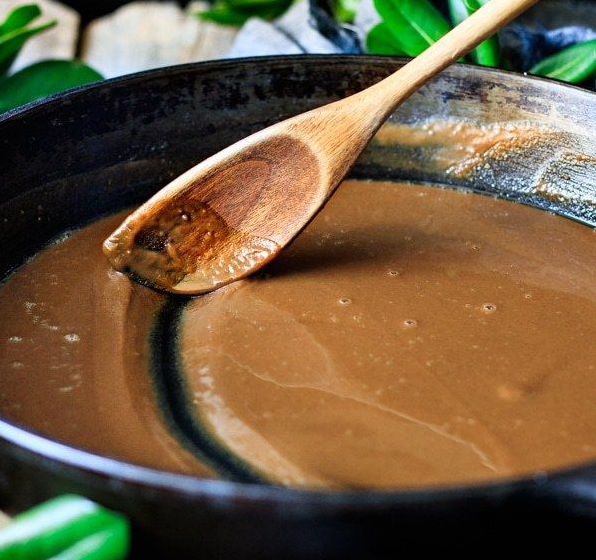
During and/or After
Being a NE’er when I moved to New Orleans (NOLA) some 30 years ago for 8 years, I was immediately welcomed and engaged with the unique culture of the city, including music, dance …. and cooking. Respectfully, I was introduced to Dr. John, Cajun swing (described in my posting Location, Location, Location on this blog), ….. and roux. Roux is a combination of fat and flour that is used to develop the base for the classic Creole recipes of NOLA, including gumbo and étouffée.
Roux is equal weights of flour and fat cooked together in which butter, bacon drippings or lard are commonly used as fats. It is used as a thickening agent for gravy, sauces, soups and stews. In general there are 3 shades of roux depending how long you cook the mixture (with constant gentle stirring): white, cream, and chestnut brown. Actually, I had been using white roux for 50 some years when making turkey gravy for Thanksgiving and Christmas. I didn’t know the term. For Creole cooking, the chestnut brown provides the richer flavor to service those recipes most handsomely. So! It is DURING the cooking process that the roux is developed and becomes a critical component.
Once leaving NOLA, I came upon Beurre Manié by chance when my turkey gravy was not thickening well enough for my taste. The chef for my favorite restaurant in Villefrance Sur Mer, La Belle Étoile, (several postings on this village are in the TRAVEL category of this blog.) introduced me to this additive for such situations. Beurre Manié also consists of equal weight portions of butter and flour. BUT, it is added after the dish at the end of the cooking to add thickening if desired. It is simply made by creaming softened butter and blending in the flour into a paste. It resides in reserve in the freezer until I need it to cover up my mistakes with the original recipe. How much to add is not exact, but played with until satisfied. At most I have added 2 tablespoons when I really messed up – no one knows.
According to http://www.beyondsalmon.com/2009/11/to-cook-or-not-to-cook-roux-vs-beurre.html a discussion is provided as to beurre manié vs, roux as well as provided on Michael Rhulman's blog. As noted there, “Some people claimed that if roux is not made with clarified butter, it has less thickening power. Others claimed that sauces thickened with beurre manié would thin out after several minutes of simmering, particularly if you double dip when tasting since your saliva contains a starch digesting enzyme.” Ok, I write that off as TOTAL BS in that I am never going to get a single Michelin Star. BTW, Julia Child's Mastering the Art of French Cooking calls for thickening with beurre manié with which to start instead of a roux.
The bottom line for me is to use a roux to start. It is a pleasure to have that control of that part of the recipe, especially for Creole cooking due to the additional flavor of a chestnut brown roux. Have the beurre manié in reserve. Remember, Just Between Us. ![]()